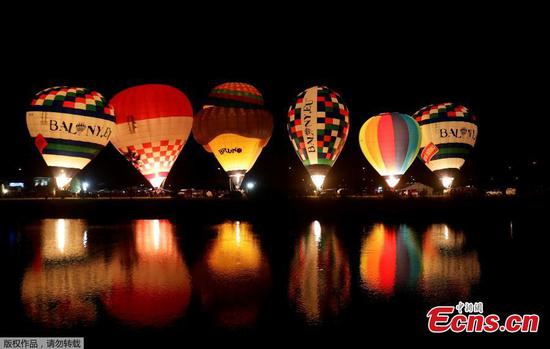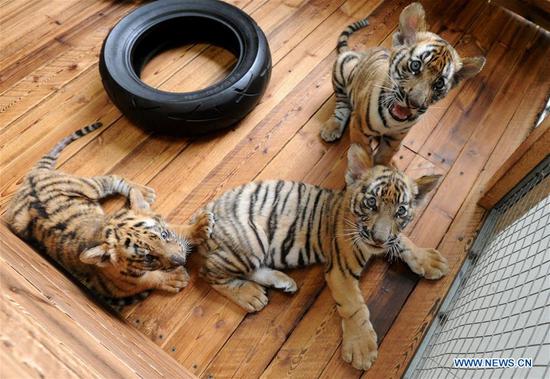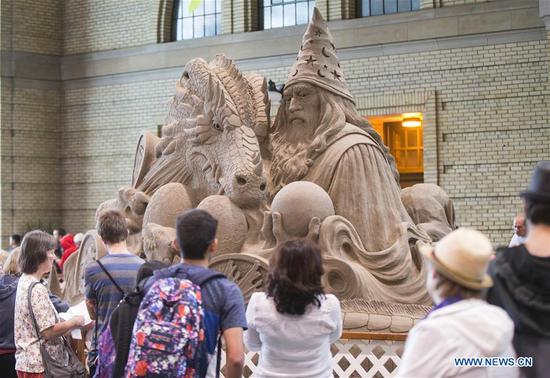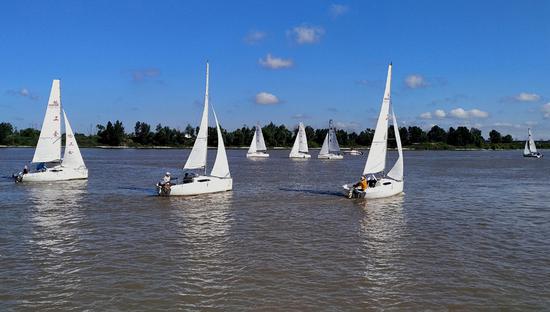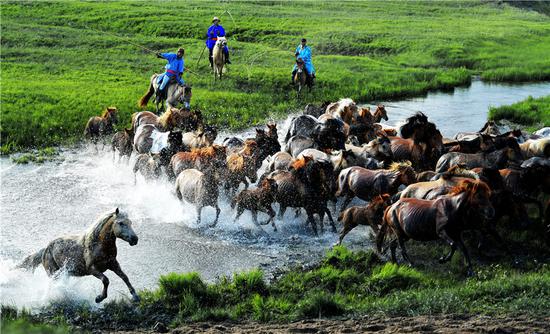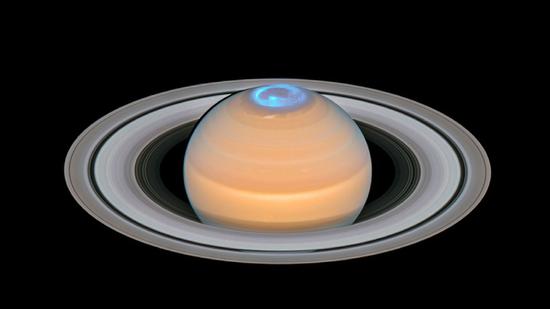
A composite image puts the Hubble Space Telescope's measurements of Saturn's ultraviolet northern auroras on top of a visible-light image of the planet. Hubble measured Saturn's auroras during the months surrounding its northern solstice to learn more about the planet's magnetic field. ( Credit: ESA/Hubble, NASA, A. Simon (GSFC) and the OPAL Team, J. DePasquale (STScI), L. Lamy)
Newly released images taken by the Hubble Space Telescope have revealed details of Saturn's auroras, which are significantly bigger than those on Earth.
The photos, taken over a seven-month period in 2017 during and after Saturn's summer solstice, are "the most comprehensive picture so far of Saturn's northern aurora," the European Space Agency (ESA) said in a statement.
On Earth, auroras occur when charged particles from the Sun strike atmospheric oxygen and nitrogen molecules to produce displays of lights at high latitudes, which are visible to the naked eye.
However, unlike Earth, Saturn has an atmosphere composed mostly of hydrogen, which produce ultraviolet lights when interacting with particles in the solar wind. Such lights cannot be seen by the naked eye or ground-based telescopes, but can be captured by the Hubble from space.
The images revealed new details about Saturn's auroras, including that they peak in brightness at dawn and pre-midnight, according to the ESA. These observations were published in a new study in the journal Geophysical Research Letters.
Besides Earth and Saturn, auroras have also been spotted on Jupiter, Neptune, Uranus and Mercury.














